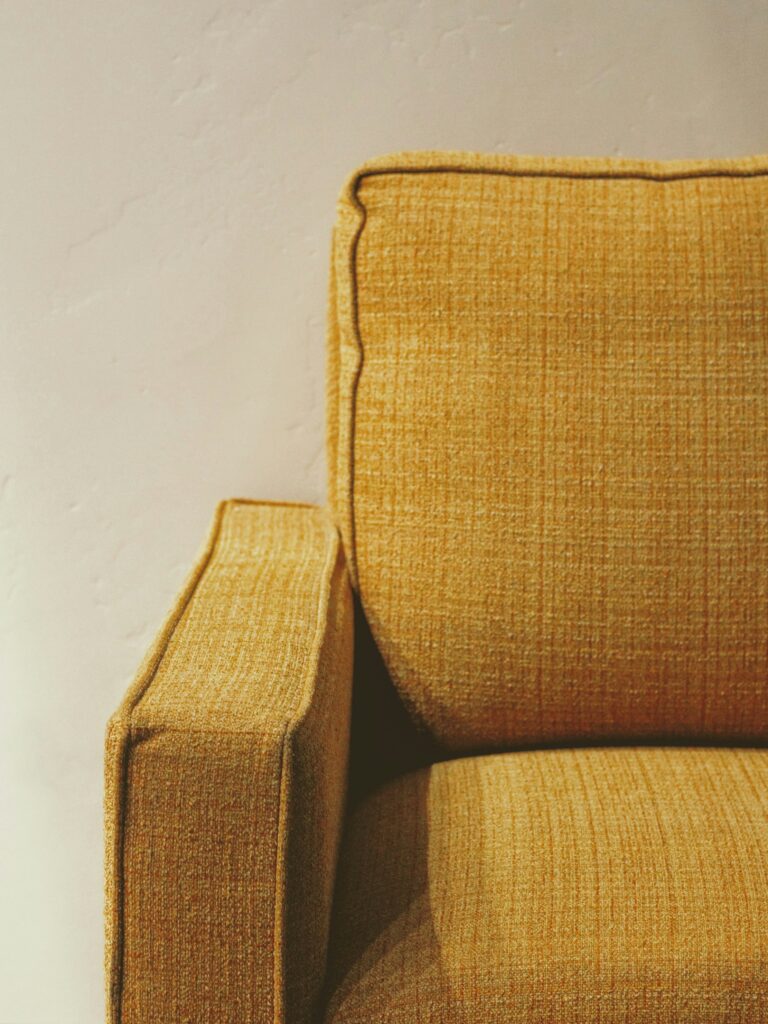
We all want to buy durable furniture, right? Investing in a piece of furniture is not just about how it looks; it’s also about ensuring that it can withstand the wear and tear of daily life. One of the key factors that determine the durability of furniture is the fabric used in its upholstery. Fabric rub count, also known as abrasion resistance, is a crucial metric that can provide valuable insights into how long a piece of furniture is likely to last. In this blog post, we’ll dive into the concept of fabric rub count, explore how it’s measured, and discuss why it matters when selecting furniture for your home.
Understanding Fabric Rub Count:
Fabric rub count refers to the number of rubs or abrasions a fabric can withstand before showing signs of wear. It is commonly measured using standardized testing methods, such as the Martindale or Wyzenbeek tests. These tests simulate the friction that occurs during normal use, such as sitting or leaning against a piece of furniture. The higher the rub count, the more durable the fabric is considered to be.
Martindale vs. Wyzenbeek Tests:
The Martindale test is one of the most widely used methods for measuring fabric rub count. It involves a machine with rotating discs covered in a special fabric that rubs against the test fabric in a figure-8 motion. The test is repeated until the fabric shows signs of wear, such as fraying or pilling. The rub count is then determined based on the number of cycles completed before the fabric fails.
On the other hand, the Wyzenbeek test involves a machine that uses a special piece of cotton or wire to rub against the fabric in a back and forth motion. Similar to the Martindale test, the fabric being tested is subjected to repeated rubbing until it shows signs of wear. The rub count is calculated based on the number of double rubs completed before failure.
Interpreting Rub Count Ratings:
Fabric rub count ratings can vary widely depending on the type of fabric and its intended use. Generally, more durable furniture has a higher rub count and is therefore more suitable for high-traffic areas such as living rooms or commercial spaces. Here’s a rough guide to interpreting rub count ratings:
- Light-duty fabrics typically have a rub count of 6,000 to 9,000 double rubs. These fabrics are suitable for occasional use or low-traffic areas such as accent chairs or decorative pillows.
- Medium-duty fabrics range from 9,000 to 15,000 double rubs. They are suitable for everyday use in residential settings and can withstand moderate wear and tear.
- Heavy-duty fabrics have a rub count of 15,000 double rubs or more. These fabrics are highly durable and are ideal for high-traffic areas such as family rooms, dining chairs, or commercial spaces.
- I recommend a rub count of 50,000 or more for furniture that will get used daily. In an average home, a piece of upholstery with this type of rug count would last 10 years or more with daily use. That’s impressive!
Other Factors Affecting Durability:
While fabric rub count is an important indicator of durable furniture, there are other factors that can affect a fabric’s performance. These include:
- Fiber Content: Natural fibers such as cotton and wool tend to be less durable than synthetic fibers like polyester or nylon. Blends of natural and synthetic fibers often offer a balance of comfort and durability.
- Weave: The tightness and construction of the fabric weave can impact its durability. Fabrics with a tight weave are generally more resistant to abrasion and tearing.
- Finish: Some fabrics are treated with finishes or coatings to enhance durability and stain resistance. However, these finishes may affect the fabric’s texture and breathability.
- Maintenance: Proper care and maintenance can extend the life of upholstered furniture. Regular vacuuming, spot cleaning, and professional upholstery cleaning can help prevent premature wear and tear.
This article from the New York Times is a fantastic resource if you’re in the market for new furniture!
Choosing the Right Fabric:
When selecting upholstery fabric for furniture, it’s essential to consider both aesthetics and durability. While a delicate silk fabric may look luxurious, it may not hold up well in a high-traffic household with children or pets. Here are some tips for choosing the right fabric for durable furniture:
- Assess Your Lifestyle: Consider your lifestyle and how the furniture will be used. If you have children or pets, opt for fabrics with higher rub counts and stain-resistant finishes.
- Test Samples: Before making a final decision, request fabric samples and perform your own durability tests. Rub the fabric between your fingers to gauge its thickness and resilience.
- Consider Color and Pattern: Darker colors and tightly woven patterns tend to conceal stains and wear better than lighter colors or delicate patterns.
- Seek Professional Advice: If you’re unsure about which fabric to choose, consult with a furniture retailer or interior designer who can provide expert guidance based on your specific needs and preferences.
Fabric rub count is a super useful metric to consider when you’re shopping for upholstered furniture. Choosing fabrics with the appropriate rub count for your needs will help you make your house function for you!
Resources:
Here’s a quick list of the resources mentioned in this post:
- “Sofa Buying Advice From the People Who Design and Make Them” by the New York Times
- Our Portfolio